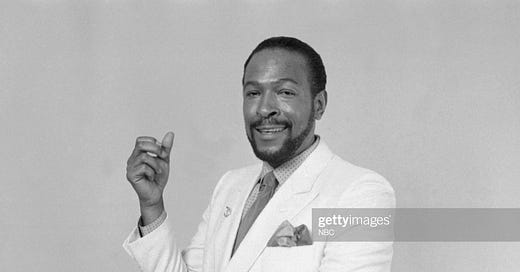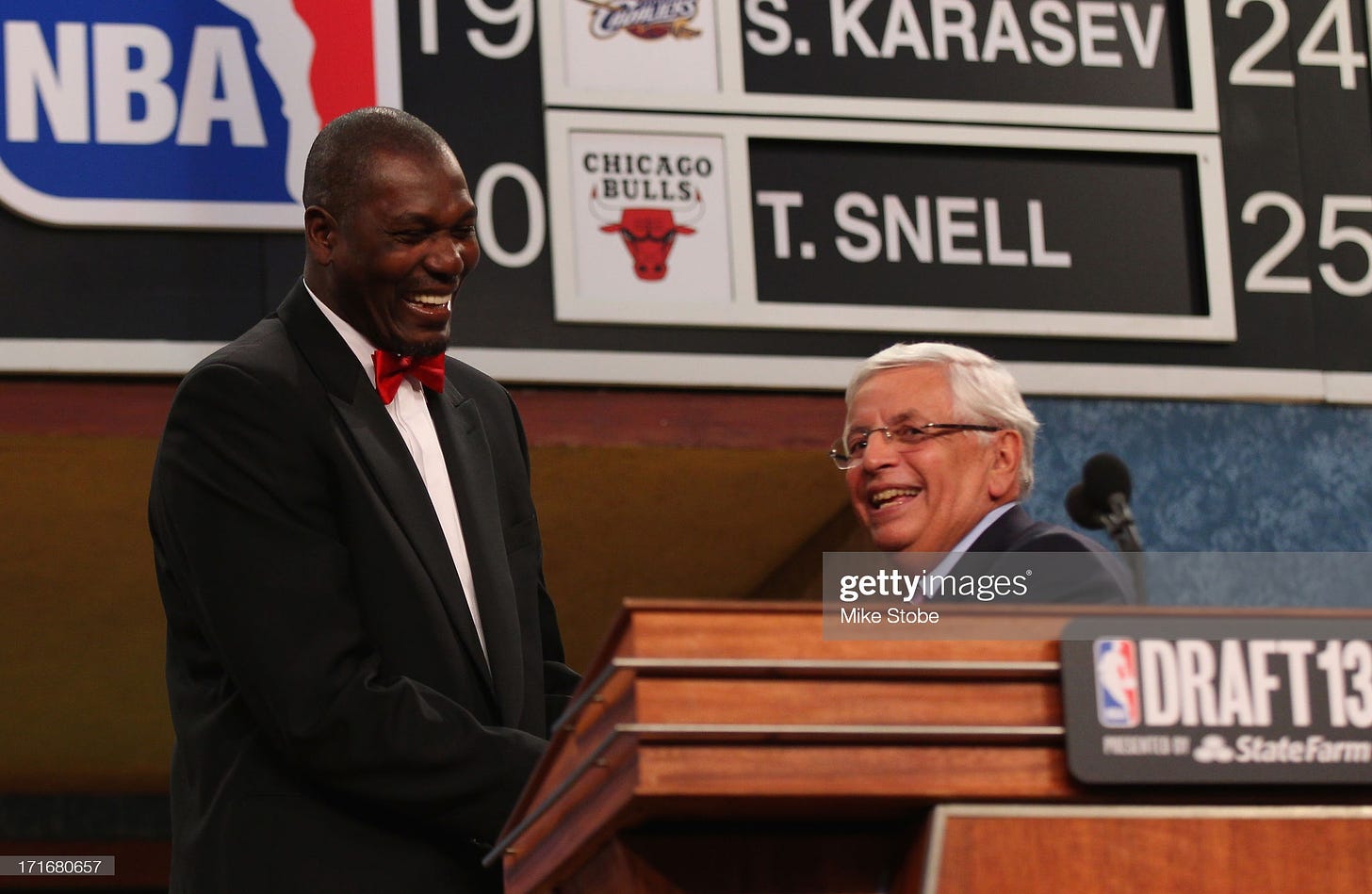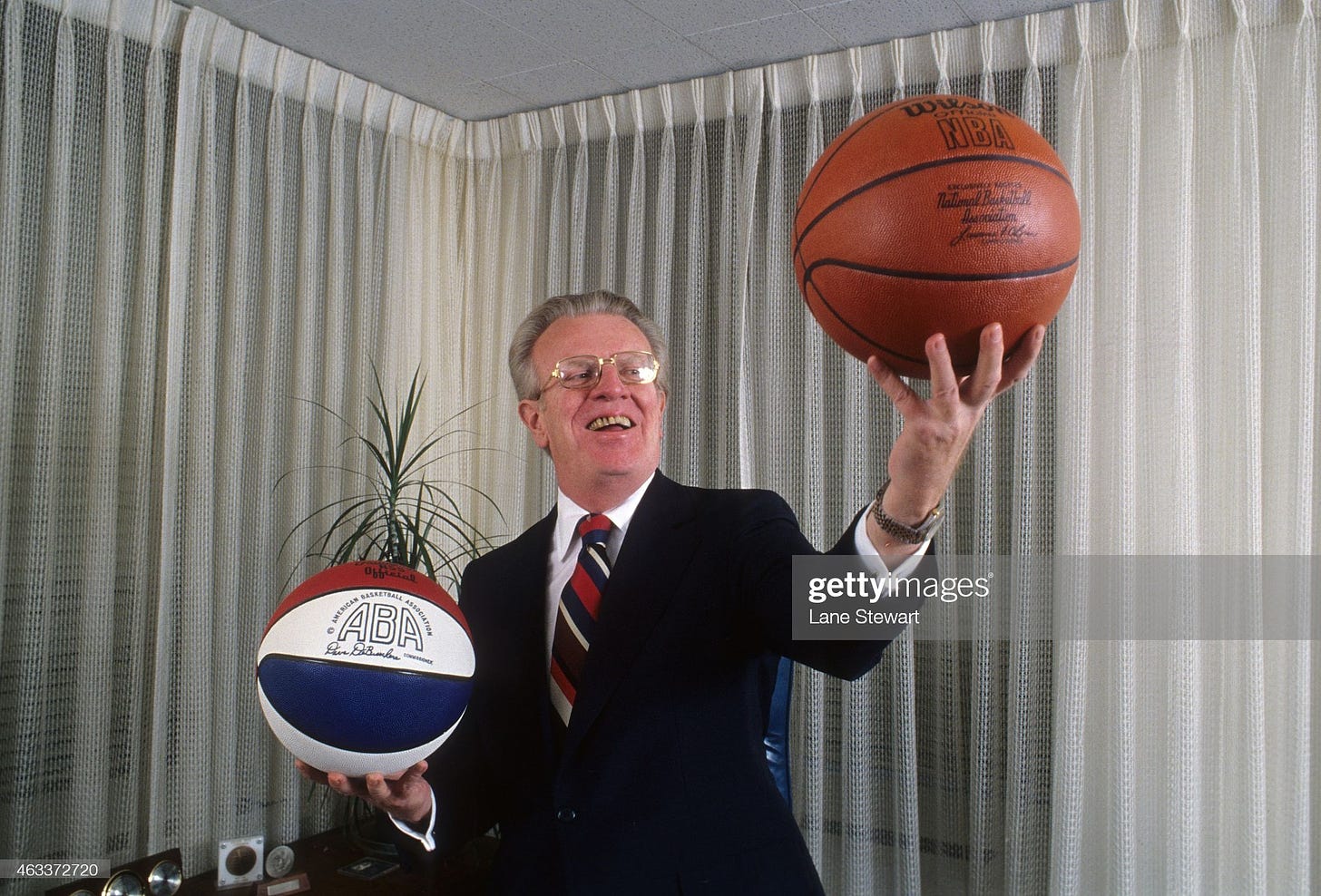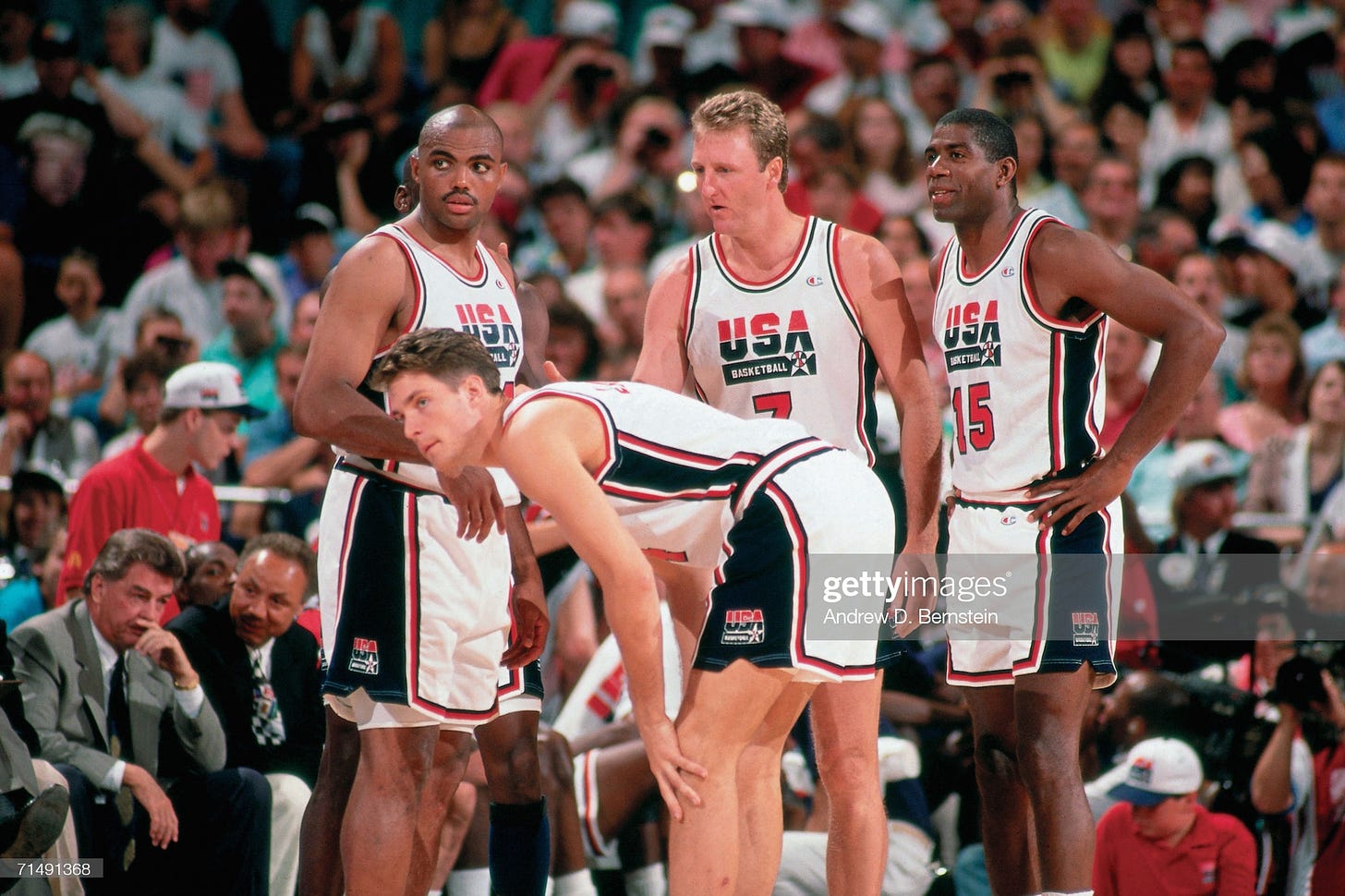Welcome to the ProHoopsHistory Book Club!
This is where I try to help you help me help sports history writers.
Simple stuff.
Today we’re Q-ing and A-ing with Pete Croatto, a freelance writer who lives in Ithaca. He’s had bylines in The New York Times, SLAM, Victory Journal, Grantland, FanSided, and RollingStone.com. You can follow him on Twitter @PeteCroatto.
His new (and first) book is From Hang Time to Prime Time: Business, Entertainment, and the Birth of the Modern-Day NBA.
As the title suggests, Pete goes deep on the NBA’s entertainment transformation during the 1980s following the merger with the rival ABA in 1976. I find it refreshing because it goes beyond a simple “Magic, Bird, and Jordan showed up and everyone got excited about the NBA” explanation. He has interviews with dozens upon dozens of people from players to employees at the league office to people who worked on video production to give a particularly novel view of the ‘80s NBA.
WHERE TO BUY THE BOOK
Odyssey Books — a local vendor in Ithaca, they’ll provide you a signed copy if you order via phone or email. Worth the one extra step if you want the signature or want to help a small business.
You can also get it via…
Simon & Schuster, the publisher have more vendors here
Q1: Why did you decide to write a book on the 1980s NBA? What about the framing of entertainment and business appealed to you?
Pete Croatto: A couple of factors. I'm a big reader of basketball books, and I had never read one that looked at the 1980s NBA in great depth. The other eras were covered in a slew of classics: Leonard Koppett covered the league's early years in 24 Seconds to Shoot; David Wolff wrote Foul!, which delved into the 1960s and early 1970s. Terry Pluto's wonderful Loose Balls covered the ABA. There are terrific books about teams from the 1980s, chief among Jeff Pearlman's Showtime and Cameron Stauth's The Franchise. And, of course, there are too many autobiographies and biographies to mention.
Many books frequently brought up the NBA's turmoil during the late 1970s and 1980s as if it was widely understood or as a prelude to a bigger story. The league was in trouble and then Magic Johnson and Larry Bird entered the league, and everything changed. I wanted to know more. I became an NBA fan in the early 1990s, and I didn't really know the nitty-gritty of the 1970s and 1980s, only the broad strokes. That always bothered me.
The framing of the business and entertainment came by accident. In 2013, I wrote my first piece for a major outlet, a 2,500-word feature for Grantland on Marvin Gaye's rendition of the national anthem at the 1983 NBA All-Star Game. What struck as I labored over that piece was how that moment signified a new NBA, one that was about entertainment and corporate structure.
Think about it: the next year, David Stern starts his 30-year run as commissioner and the NBA All-Star Game begins its All-Star Weekend, which is a business retreat with hoops and parties. I wanted to know what happened before the anthem and after it, and in my reporting and research, the business and entertainment aspects emerged as driving forces behind the NBA we see today--and those aspects intrigued the hell out of me.
Q2: One of the great things about researching are the unexpected stories you come across, even from well-known people or events. Was there any person or moment that surprised you with their role in this story?
PC: The joy of this book was the reporting and the research. You know how this goes, Curtis. You dig and dig and you make phone call after phone call and it becomes addictive. I started to crave information and anecdotes and nuggets. I could have reported this book for years, which wouldn't have been good for anyone.
[This editor groans as he looks at his unfinished, ever-expanding dissertation.]
One thing that surprised me was how loved David Stern was by his employees. It's no great secret that he had a reputation of being a hard-ass and demanding, but he engendered loyalty. He truly cared about the men and women who worked for him. If you look at a lot of the NBA employees I spoke to for the book, there were very few people who spent a year working for Stern. Some folks stayed decades; a few are still around. Did everyone like him? Hell, no. He could be a bully and if you were in his way, he could simply bulldoze you over. But he cared so much about the NBA, and his passion was infectious.
What David Stern did was very simple: he gave his employees the freedom to fail, to try new things. Yes, the hours were brutal. Yes, he'd blow up if you tried to bluff your way to an answer, but he embraced creativity and the unorthodox. Any idea was on the table. That's the first thing. Second, he worked just as hard--if not harder--than everyone else. So many bosses are micro-managers or simply go through the motions. That was not Stern. He was all-in.
But there was a human side. He would call doctors on behalf of an NBA employee who was gravely ill. He would check in on the employee's wife who had a miscarriage. For Rick Welts, who was trying to gain corporate sponsors in the early 1980s, an ordeal, Stern would call him every night offering encouragement. The NBA was a family at that time, and David Stern was Dad.
Q3: Which seemingly minor figure or moment took on a bigger role in this story than you anticipated?
For me, it's Larry O'Brien, the commissioner before David Stern. I didn't know much about O'Brien before I started the book, but his taking over as NBA commissioner in 1975 is an integral, overlooked part of NBA history. First, he gave a floundering league legitimacy. Here was a member of JFK's Irish Mafia, a man who was the chairman of the DNC (twice), a person who landed on the cover of Time Magazine. And he's leading the NBA. The league needed him, not the other way around, so it was a major coup to cajole O'Brien out of retirement and into the NBA.
The other role O'Brien played was he hired David Stern, then outside counsel of the NBA, full-time and pretty much let him run the day-to-day operations of the league. For five to six years, Stern served an immersive apprenticeship and O'Brien left him alone before vouching for him to be the next commissioner. In that time, David Stern built an army--Welts, Bill Marshall, Adrian De Groot--that would transform the NBA into relevance and beyond.
[This editor finds Larry O’Brien an uncompelling figure and would argue to the death with Pete about his importance. But that’s one of the fun parts of research: debating with other nerds!]
Q4: My favorite section of the book focused on the NBA developing products for VHS. I grew up watching a lot of the videos you mentioned, but hadn't actually thought of them in a critical way. It’s merely become nostalgia for me over the years, so I guess I'm proof the marketing strategy worked.
So, how did you decide to include a chapter on NBA Entertainment diving into the world of home video? Was it planned from the outset?
PC: Me, too! Dazzling Dunks and Basketball Bloopers and Super Slams of the NBA are why I'm here. Great job, NBA Entertainment!
Was it planned from the outset? No. It came about because the more I talked to former employees at NBA Entertainment, the more the value of the videos became apparent. As someone told me, they were really recruitment tools for the NBA. Plus, they really helped develop narratives that casual fans could get behind. The Bad Boys Pistons are total creations of NBA Entertainment videos. The chapter really came into focus when I interviewed two execs at CBS-Fox Home Video, George Krieger and John Gaffney. They provided clarity and insight into why the NBA videos worked. Don Sperling at NBA Entertainment, too, was great.
You might be too young to remember how big a deal it was to get a VCR.
[This editor is indeed too youthful and full of vigor to remember such frivolities.]
My family got ours in 1985, and it was life-changing for a kid in the suburbs. Our entertainment options exploded and we were not held prisoner by network TV or costly premium cable channels. For sports fans, like myself, that meant you could rent or buy your own videos, more so when the prices of video tapes went down. The VCR's impact diminishes with each PlayStation iteration, so I wanted to pay tribute to how integral it was to a generation of kids who could have their entertainment needs met--even those they didn't realize they had.
Q5: My second favorite section is the one on international players arriving in the NBA during the mid- and-late-1980s. One of my hobby horses is carping about the Dream Team. They didn’t initiate the NBA's global reach in 1992. Those Olympic games certainly helped, but that project was long underway.
Why do you think the NBA's international outreach prior to the 1990s, as well as the foreign players of the 1980s, get overlooked?
You're right. I think there are a couple of issues at play. If you look at 1989 as the first significant foreign wave--Voklov, Divac, Petrovic, Marciulionis--there's a fair bit of xenophobia and curdled nationalism. European players had a reputation for being soft or not as skilled as the typical NBA player, and there's the fine American tradition of rejecting the unfamiliar. Those guys are great players. Three are in the Hall of Fame, and Volkov was no slouch, but they don't enjoy the reputation of the Dream Team. They should. These men uprooted their lives to play in the NBA, and they were exceptional. Drazen made Third Team All-NBA; Vlade was an All-Star.
The Dream Team, I think, is the answer to your question. It's a lot easier for some Americans to accept foreigners if that acceptance comes with a heaping dose of superiority. And that's what the Dream Team provided. You have Michael Jordan, Karl Malone, Charles Barkley, and everyone else destroying teams, clearly establishing the United States as the best in basketball, and that serves as a comfortable narrative for many Americans to embrace. As long as these other teams know their place, then it's OK.
And then if Tony Parker, Dirk Nowitzki, and other great international players cite the Dream Team as their introduction to basketball, that's something the close-minded can embrace. They're here because of us. Never mind that Russia was a basketball powerhouse for decades and high school and college coaches were flocking to Europe and South America to teach clinics. But all that stuff wasn't aired non-stop on NBC for a month or enjoyed a massive marketing campaign.
Q6: You did an enormous amount of interviews for this book. I think the jacket said over 300. Who were some of your favorite people to interview?
PC: I've joked about this, and it's true: the best interviews came from people you have never heard of in your life. Yes, the fan in me dug talking to Julius Erving, George Gervin, Oscar Robertson, Elgin Baylor, and Alex English. I spent 90 minutes talking to Hubie Brown about 1980s basketball, which was a friggin' treat. Lesley Visser was a childhood crush, and 25 years later, she's busting my balls about not going to the Boston Garden.
But the best interviews, the most honest and heartfelt interviews, came from anonymous figures in the NBA's rise. I mentioned John Gaffney, Don Sperling, and George Krieger earlier. They were amazing. So was Barbara Ward, an administrative assistant for the NBA back in the early 1980s; Stephen Koontz, an NBA Entertainment producer, is a great storyteller. I laughed harder talking to Jim Riswold, who wrote those great Mike-Spike commercials for Nike, than anyone.
That goes to show you how many people played an integral role in the NBA's rise. It's not just Bird and Magic and Jordan.
Q7: Last question... who is your favorite player from the 1980s? Who is your least favorite?
Oh, man. This is a bittersweet question. I was a Kevin McHale fan for years--my pick-up game is totally modeled after his low-post approach--but then he showed up at a Trump rally and it soured me. He's my favorite player of the 1980s, even though he probably would not be my favorite person.
My least favorite player is easy: Michael Jordan. I was a Knicks fan growing up in the 1990s, so every playoffs Jordan would make my life miserable. Every spring was like being hit in the face with a Louisville Slugger. Thankfully, I've grown to appreciate his game now that James Dolan has turned me into an NBA mercenary, though I do hold a soft spot for the 76ers.
[This editor notes that the correct answer for “least favorite basketball player” is always Karl Malone.]
Thanks to Pete for the Q&A and for writing an awesome book.
Remember to snag a copy. Here’s that info again in case you forgot…
Odyssey Books — a local vendor in Ithaca, they’ll provide you a signed copy if you order via phone or email. Worth the one extra step if you want the signature or want to help a small business.
There’s also…
Simon & Schuster, the publisher have more vendors here







